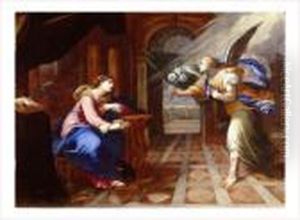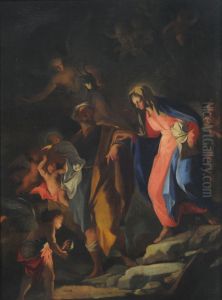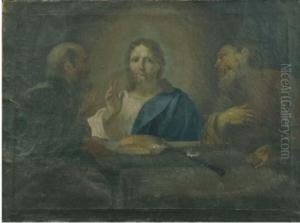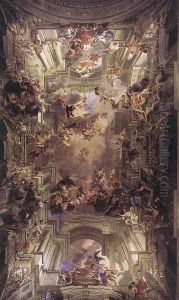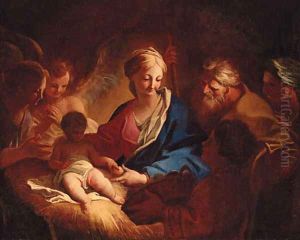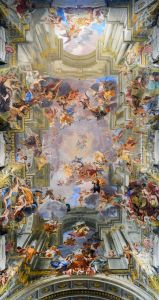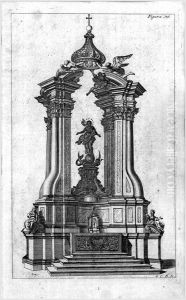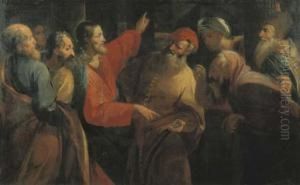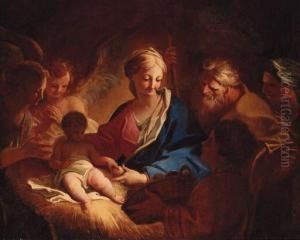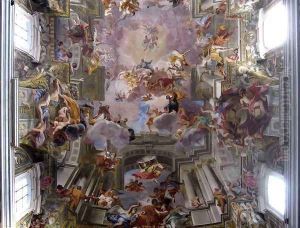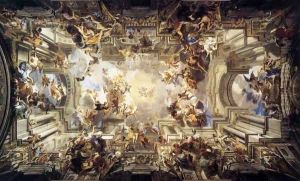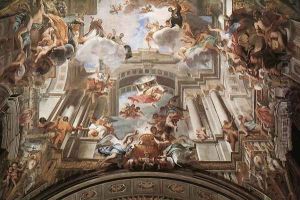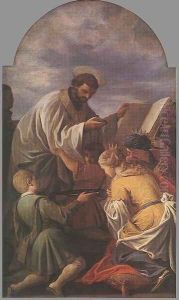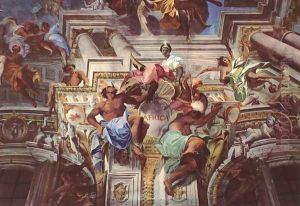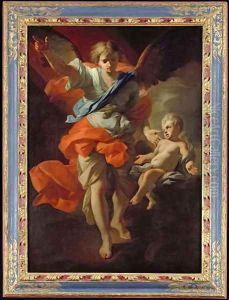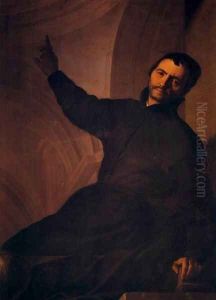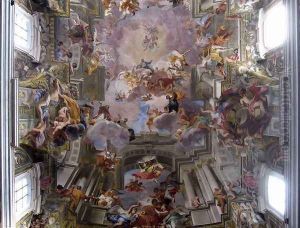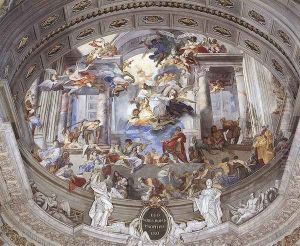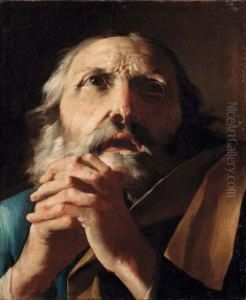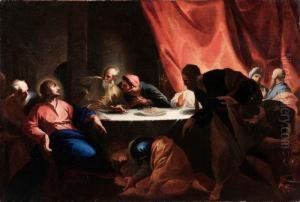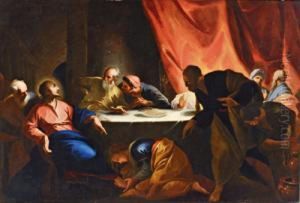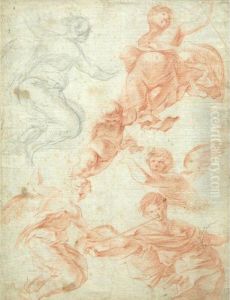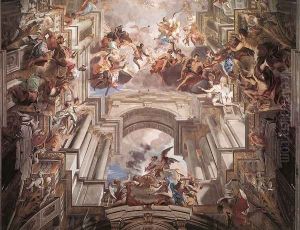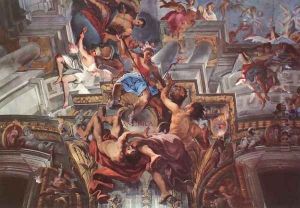Andrea Pozzo Paintings
Andrea Pozzo was an Italian Jesuit brother, Baroque painter, and architect, celebrated for his trompe l'oeil frescoes. Born on November 30, 1642, in Trento, then part of the Bishopric of Trent within the Holy Roman Empire, Pozzo was a leading figure of the Roman Baroque period. He joined the Jesuit Order in 1665, and his work largely reflects the Counter-Reformation ideals of the time.
Pozzo's mastery in creating elaborate illusionistic ceiling frescoes is best exemplified in his seminal work at the Church of Sant'Ignazio in Rome, completed in 1685. This grandiose fresco, 'The Triumph of Saint Ignatius of Loyola', covers the nave's ceiling and creates an illusion of an open sky with the saint being welcomed into paradise. His work at Sant'Ignazio represents one of the high points of trompe l'oeil painting, where architectural and painted elements blend seamlessly to trick the viewer's eye into seeing a three-dimensional space.
In addition to his frescoes, Pozzo was also an accomplished architect. He designed the altar and the majestic apse of the Church of Sant'Ignazio, and his architectural skills are evident in the spatial dynamics of his painted architecture. His talents were not confined to Rome; he also worked in Vienna and other parts of Europe, spreading the Baroque style and his illusionistic techniques.
Pozzo was also an influential theoretician. His two-volume treatise, 'Perspectiva pictorum et architectorum' (Perspective for Painters and Architects), was published in 1693 and 1700. This work provided detailed instruction on perspective drawing and was widely disseminated, influencing artists and architects well into the 18th century.
His ingenuity in perspective and his ability to transform plain ceilings into celestial vistas made Pozzo one of the most remarkable artists of his time. He passed away on August 31, 1709, in Vienna, Austria. His legacy lives on in his artworks and his influence on Baroque art and architecture is still acknowledged today.
